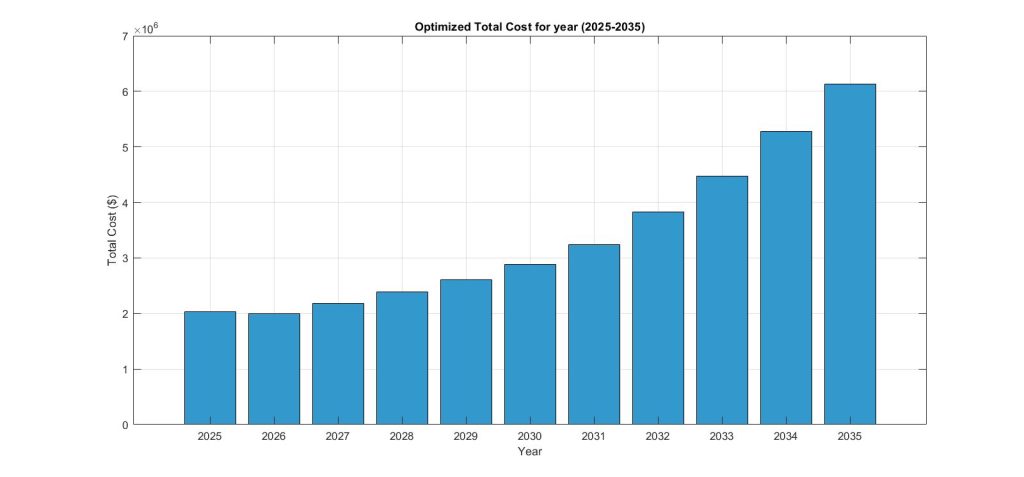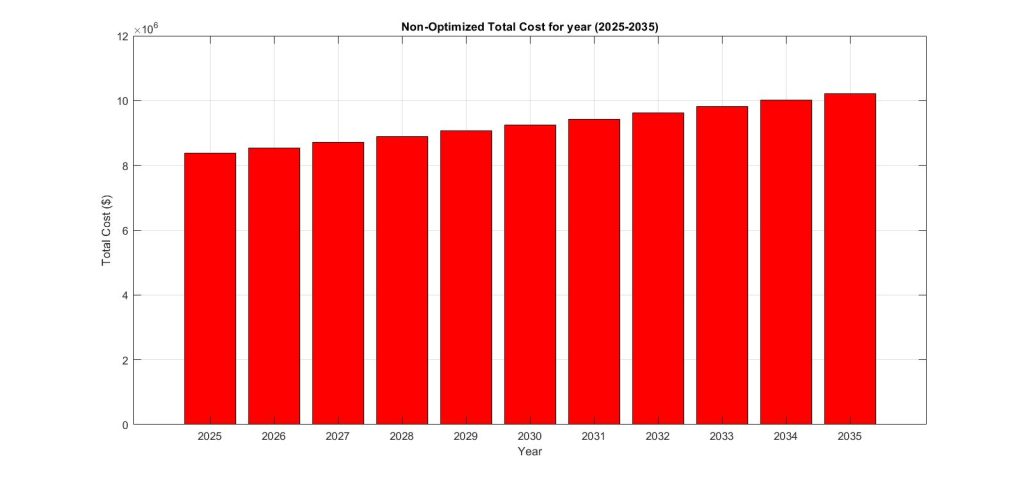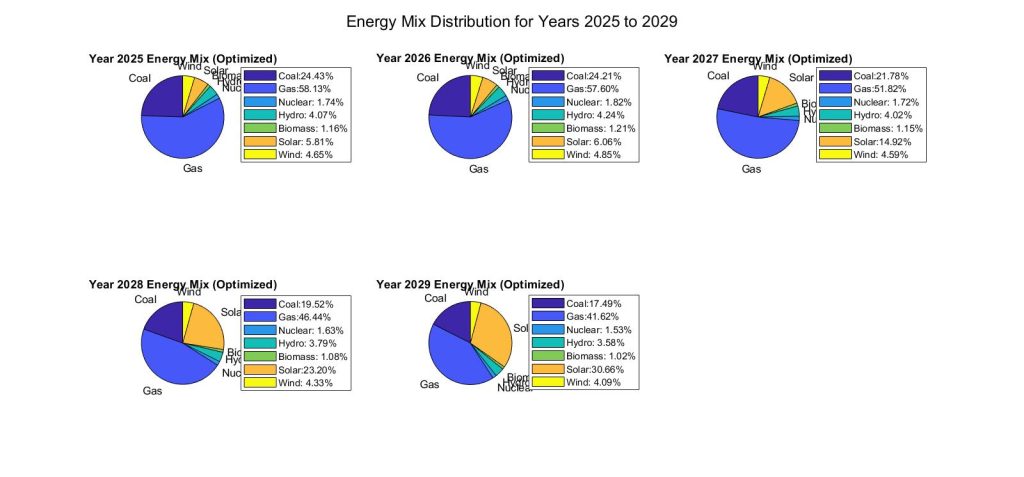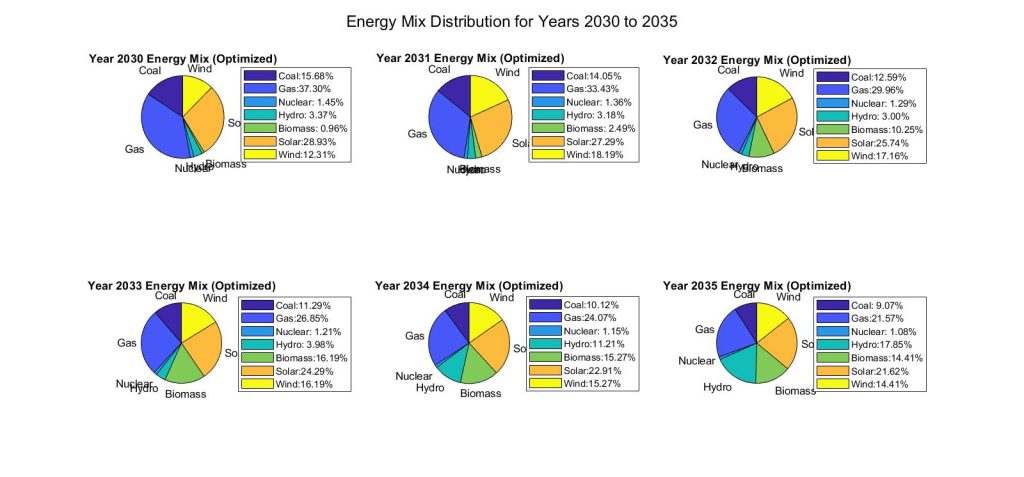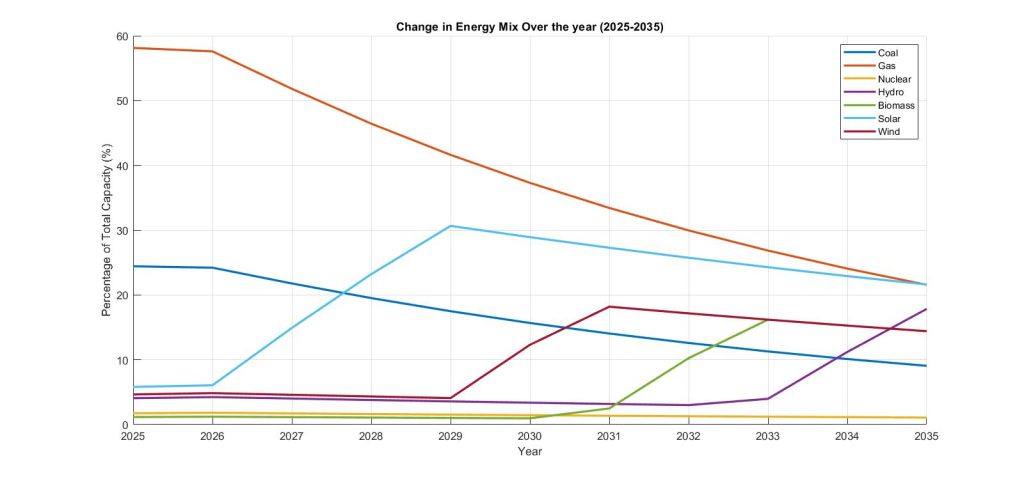Optimum Energy Mix for Future Power System of Bangladesh Considering Carbon Economy
As Bangladesh continues to develop, the demand for energy is growing rapidly, posing significant challenges to the country’s power sector. To address these challenges, my research focuses on determining the optimum energy mix for Bangladesh’s future power system, with a strong emphasis on minimizing carbon emissions. This approach is essential to balance the nation’s energy needs with its environmental responsibilities, aligning with global efforts to combat climate change.
Research Overview:
The core objective of this research is to design an energy portfolio that is not only cost-effective but also environmentally sustainable. The study analyzes a range of energy sources, including:
– Conventional Sources: Coal and gas, which have historically been the backbone of Bangladesh’s energy sector.
– Nuclear Energy: As a potential low-carbon alternative with significant capacity for base-load generation.
– Hydropower: A clean and renewable source, though limited by geographical and environmental constraints.
– Renewable Sources: Solar, wind, and biomass, which are crucial for reducing carbon emissions and ensuring long-term sustainability.
Methodology:
The research employs advanced optimization techniques to evaluate different energy scenarios over an 11-year period, from 2025 to 2035. Several key factors are considered in the analysis:
– Investment Costs: The initial capital required to set up various energy generation facilities.
– Fuel Costs: The ongoing expenses related to the operation of fossil fuel-based plants.
– Operational and Maintenance (O&M) Costs: Regular expenses necessary to maintain the infrastructure.
– Carbon Intensity: The amount of carbon dioxide emitted per unit of energy generated, a crucial factor for evaluating environmental impact.
– Carbon Costs: The financial penalties or costs associated with carbon emissions, which are becoming increasingly significant under global carbon trading schemes.
To optimize the energy mix, the study incorporates a variety of constraints, including the maximum and minimum capacity of each energy source, the operational hours, and a stringent carbon emission limit. By prioritizing renewable energy sources, the model seeks to reduce reliance on fossil fuels while ensuring that the energy demand is met reliably.
Key Findings:
The optimized energy mix proposed by the research suggests a gradual but steady transition towards renewable energy sources, significantly reducing carbon emissions by 2035. The results indicate:
– A decrease in the use of coal and gas, with a corresponding increase in solar, wind, and biomass energy.
– Enhanced energy security through diversification, reducing the risks associated with over-reliance on a single energy source.
– Economic benefits from reduced operational costs and lower carbon penalties, making the energy sector more resilient to future price fluctuations.
Visualization and Insights:
The research findings are presented through detailed visualizations, including bar charts, pie charts, and line graphs, which illustrate:
– Annual Costs: A comparison of optimized versus non-optimized scenarios, showing significant cost savings through strategic energy planning.
– Energy Mix Distribution: The proportional contribution of each energy source to the overall power system over the study period, highlighting the shift towards cleaner energy.
– Carbon Emission Trends: The reduction in carbon emissions over time, demonstrating the environmental benefits of the optimized energy mix.
These insights are invaluable for policymakers, energy planners, and stakeholders in Bangladesh’s energy sector. The study provides a strategic roadmap for achieving a sustainable energy future, aligning with the country’s national goals and international commitments to reduce carbon emissions.
The “Optimum Energy Mix for Future Power System of Bangladesh Considering Carbon Economy” is a forward-looking research project that addresses one of the most pressing challenges of our time: balancing economic growth with environmental sustainability. By focusing on both the economic and ecological aspects of energy planning, this research offers a comprehensive solution to guide Bangladesh towards a low-carbon, energy-secure future. It underscores the importance of innovation and strategic planning in the energy sector, paving the way for a cleaner, greener Bangladesh.
